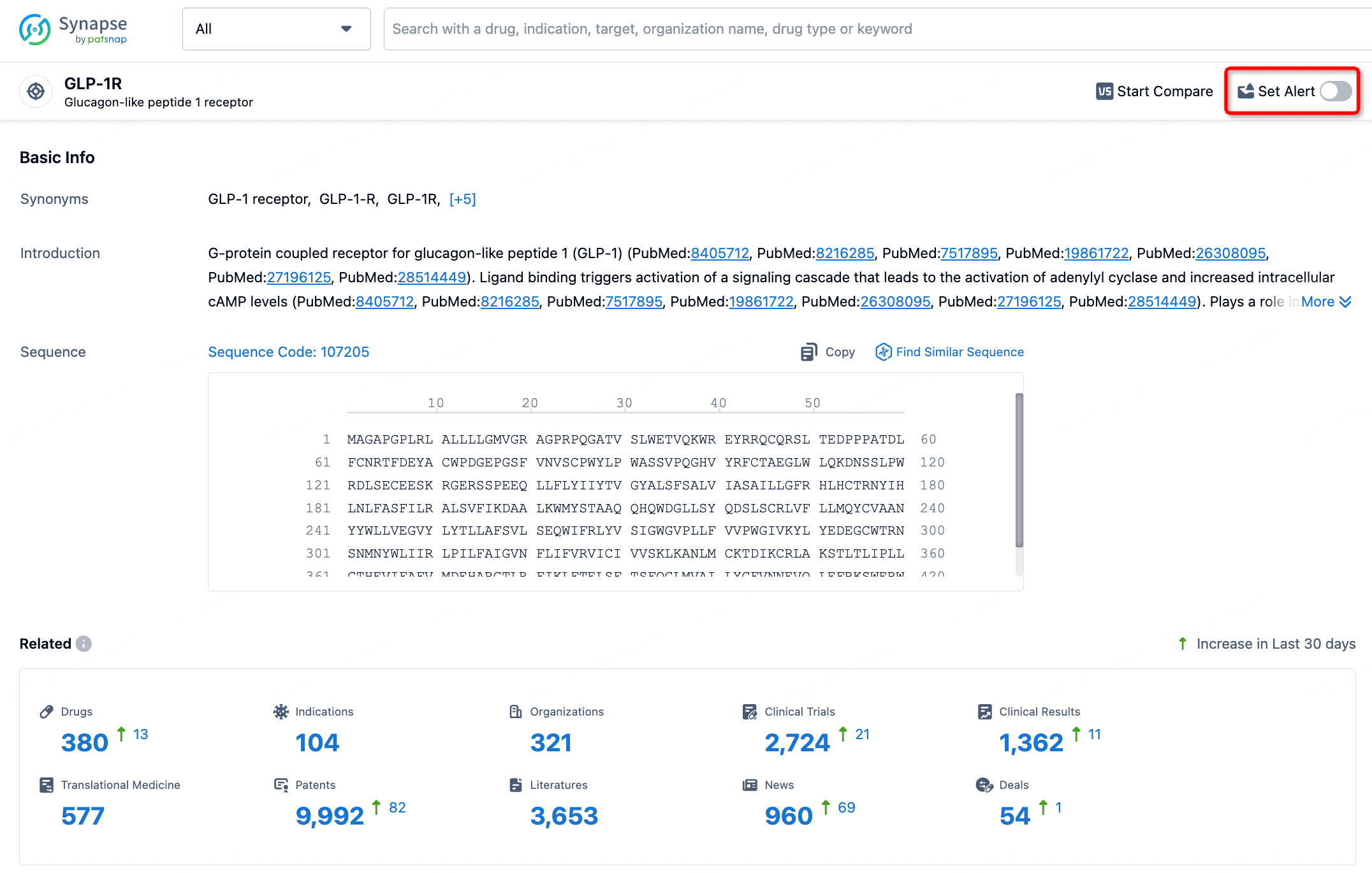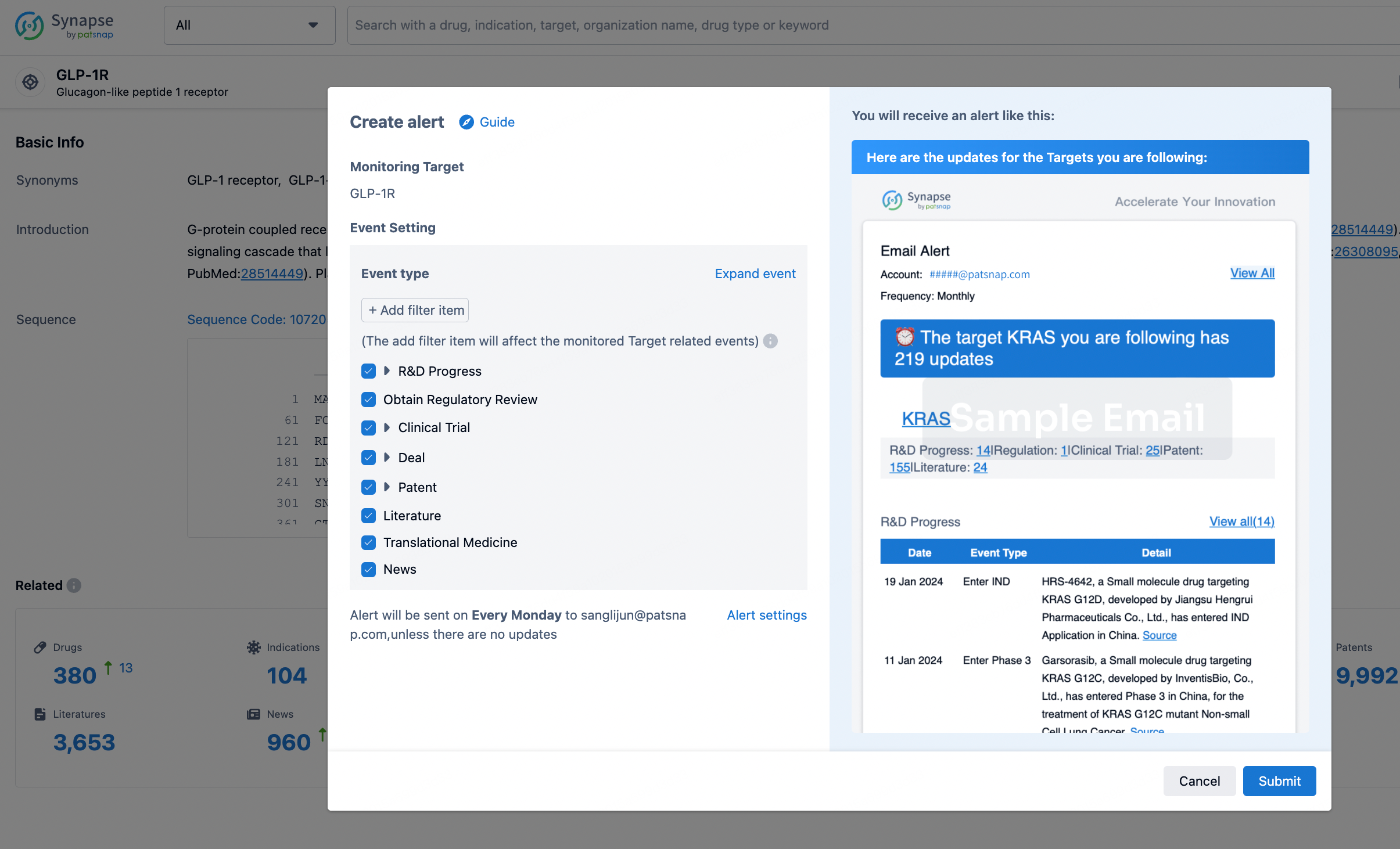Request Demo
What are cPLA2α inhibitors and how do they work?
21 June 2024
Introduction to cPLA2α inhibitors
Cytosolic phospholipase A2 alpha (cPLA2α) inhibitors are emerging as crucial players in the landscape of pharmaceutical research and development. cPLA2α is an enzyme that hydrolyzes the sn-2 position of glycerophospholipids to release arachidonic acid, a precursor for various pro-inflammatory lipid mediators such as prostaglandins and leukotrienes. Given its central role in inflammation and other pathological processes, cPLA2α has garnered significant attention as a therapeutic target. By inhibiting this enzyme, researchers aim to modulate inflammatory responses, offering potential treatments for a variety of diseases.
How do cPLA2α inhibitors work?
To understand how cPLA2α inhibitors work, it's essential to first grasp the fundamental mechanism of the enzyme itself. cPLA2α is activated by increases in intracellular calcium levels and phosphorylation by mitogen-activated protein (MAP) kinases. Once activated, cPLA2α translocates to cellular membranes, where it catalyzes the hydrolysis of phospholipids to release arachidonic acid. This fatty acid then undergoes further enzymatic reactions to produce eicosanoids, including prostaglandins, thromboxanes, and leukotrienes, all of which are potent mediators of inflammation.
cPLA2α inhibitors function by blocking the enzyme's ability to interact with its phospholipid substrates or by interfering with its activation process. This inhibition can occur through several mechanisms:
1. **Competitive inhibitors**: These molecules bind to the enzyme's active site, directly preventing substrate access.
2. **Non-competitive inhibitors**: These compounds bind to an allosteric site, causing a conformational change that impairs enzyme function.
3. **Reversible inhibitors**: These inhibitors temporarily bind to the enzyme, allowing normal function to resume once the inhibitor is removed.
4. **Irreversible inhibitors**: These form a permanent bond with the enzyme, leading to sustained inhibition.
By blocking the activity of cPLA2α, these inhibitors effectively reduce the production of arachidonic acid and its downstream eicosanoids, thereby dampening inflammatory responses and other associated pathological conditions.
What are cPLA2α inhibitors used for?
The therapeutic potential of cPLA2α inhibitors spans a wide range of diseases, primarily those characterized by excessive inflammation. Here are some key areas where these inhibitors are being explored:
1. **Inflammatory Diseases**: Conditions like rheumatoid arthritis, inflammatory bowel disease (IBD), and psoriasis are driven by chronic inflammation. cPLA2α inhibitors can potentially mitigate the pathological inflammatory responses in these conditions, providing symptomatic relief and possibly slowing disease progression.
2. **Cardiovascular Diseases**: Arachidonic acid-derived eicosanoids play a significant role in the pathogenesis of atherosclerosis, a condition characterized by the build-up of plaques in arterial walls. By inhibiting cPLA2α, it's possible to reduce the inflammatory processes that contribute to plaque formation and stability, thereby lowering the risk of cardiovascular events such as heart attacks and strokes.
3. **Neurological Disorders**: Emerging evidence suggests that inflammation is a contributing factor in neurological conditions like Alzheimer's disease and multiple sclerosis. cPLA2α inhibitors could potentially attenuate neuroinflammation, offering a novel approach to managing these debilitating diseases.
4. **Cancer**: Chronic inflammation is known to promote tumorigenesis and cancer progression. By targeting cPLA2α, researchers hope to disrupt the inflammatory microenvironment that supports tumor growth and metastasis, thereby enhancing the efficacy of existing cancer therapies.
5. **Respiratory Diseases**: Conditions such as asthma and chronic obstructive pulmonary disease (COPD) involve significant inflammatory components. cPLA2α inhibitors could help to reduce airway inflammation, improving lung function and patient outcomes.
In conclusion, cPLA2α inhibitors represent a promising class of therapeutic agents with broad potential applications. By targeting a key enzyme in the inflammatory cascade, these inhibitors offer a strategic approach to managing a variety of diseases characterized by excessive inflammation. As research continues, we can expect to see further advancements in the development and clinical application of cPLA2α inhibitors, bringing new hope to patients suffering from these complex conditions.
Cytosolic phospholipase A2 alpha (cPLA2α) inhibitors are emerging as crucial players in the landscape of pharmaceutical research and development. cPLA2α is an enzyme that hydrolyzes the sn-2 position of glycerophospholipids to release arachidonic acid, a precursor for various pro-inflammatory lipid mediators such as prostaglandins and leukotrienes. Given its central role in inflammation and other pathological processes, cPLA2α has garnered significant attention as a therapeutic target. By inhibiting this enzyme, researchers aim to modulate inflammatory responses, offering potential treatments for a variety of diseases.
How do cPLA2α inhibitors work?
To understand how cPLA2α inhibitors work, it's essential to first grasp the fundamental mechanism of the enzyme itself. cPLA2α is activated by increases in intracellular calcium levels and phosphorylation by mitogen-activated protein (MAP) kinases. Once activated, cPLA2α translocates to cellular membranes, where it catalyzes the hydrolysis of phospholipids to release arachidonic acid. This fatty acid then undergoes further enzymatic reactions to produce eicosanoids, including prostaglandins, thromboxanes, and leukotrienes, all of which are potent mediators of inflammation.
cPLA2α inhibitors function by blocking the enzyme's ability to interact with its phospholipid substrates or by interfering with its activation process. This inhibition can occur through several mechanisms:
1. **Competitive inhibitors**: These molecules bind to the enzyme's active site, directly preventing substrate access.
2. **Non-competitive inhibitors**: These compounds bind to an allosteric site, causing a conformational change that impairs enzyme function.
3. **Reversible inhibitors**: These inhibitors temporarily bind to the enzyme, allowing normal function to resume once the inhibitor is removed.
4. **Irreversible inhibitors**: These form a permanent bond with the enzyme, leading to sustained inhibition.
By blocking the activity of cPLA2α, these inhibitors effectively reduce the production of arachidonic acid and its downstream eicosanoids, thereby dampening inflammatory responses and other associated pathological conditions.
What are cPLA2α inhibitors used for?
The therapeutic potential of cPLA2α inhibitors spans a wide range of diseases, primarily those characterized by excessive inflammation. Here are some key areas where these inhibitors are being explored:
1. **Inflammatory Diseases**: Conditions like rheumatoid arthritis, inflammatory bowel disease (IBD), and psoriasis are driven by chronic inflammation. cPLA2α inhibitors can potentially mitigate the pathological inflammatory responses in these conditions, providing symptomatic relief and possibly slowing disease progression.
2. **Cardiovascular Diseases**: Arachidonic acid-derived eicosanoids play a significant role in the pathogenesis of atherosclerosis, a condition characterized by the build-up of plaques in arterial walls. By inhibiting cPLA2α, it's possible to reduce the inflammatory processes that contribute to plaque formation and stability, thereby lowering the risk of cardiovascular events such as heart attacks and strokes.
3. **Neurological Disorders**: Emerging evidence suggests that inflammation is a contributing factor in neurological conditions like Alzheimer's disease and multiple sclerosis. cPLA2α inhibitors could potentially attenuate neuroinflammation, offering a novel approach to managing these debilitating diseases.
4. **Cancer**: Chronic inflammation is known to promote tumorigenesis and cancer progression. By targeting cPLA2α, researchers hope to disrupt the inflammatory microenvironment that supports tumor growth and metastasis, thereby enhancing the efficacy of existing cancer therapies.
5. **Respiratory Diseases**: Conditions such as asthma and chronic obstructive pulmonary disease (COPD) involve significant inflammatory components. cPLA2α inhibitors could help to reduce airway inflammation, improving lung function and patient outcomes.
In conclusion, cPLA2α inhibitors represent a promising class of therapeutic agents with broad potential applications. By targeting a key enzyme in the inflammatory cascade, these inhibitors offer a strategic approach to managing a variety of diseases characterized by excessive inflammation. As research continues, we can expect to see further advancements in the development and clinical application of cPLA2α inhibitors, bringing new hope to patients suffering from these complex conditions.
How to obtain the latest development progress of all targets?
In the Synapse database, you can stay updated on the latest research and development advances of all targets. This service is accessible anytime and anywhere, with updates available daily or weekly. Use the "Set Alert" function to stay informed. Click on the image below to embark on a brand new journey of drug discovery!
AI Agents Built for Biopharma Breakthroughs
Accelerate discovery. Empower decisions. Transform outcomes.
Get started for free today!
Accelerate Strategic R&D decision making with Synapse, PatSnap’s AI-powered Connected Innovation Intelligence Platform Built for Life Sciences Professionals.
Start your data trial now!
Synapse data is also accessible to external entities via APIs or data packages. Empower better decisions with the latest in pharmaceutical intelligence.


